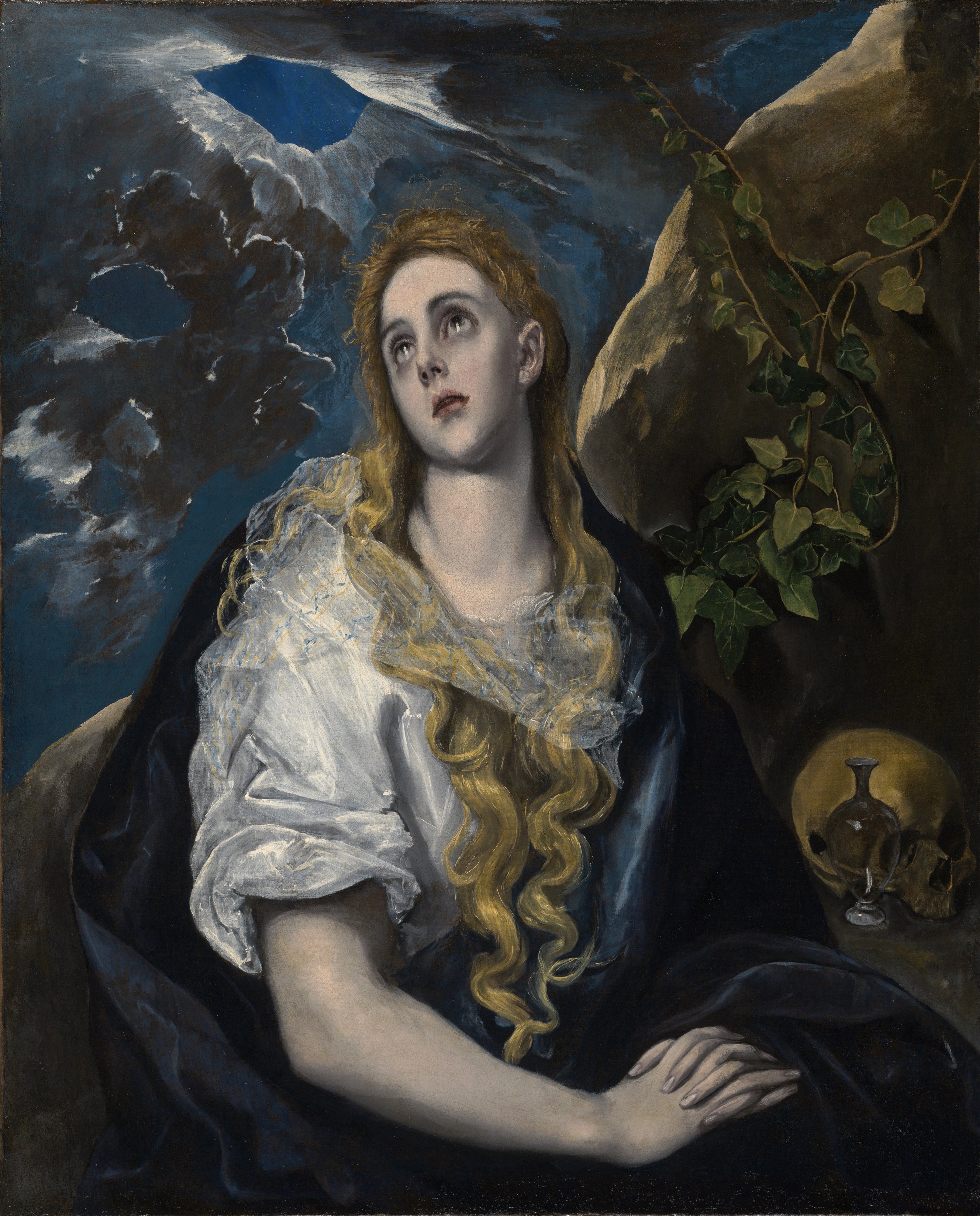A woman with folded hands gazes upward towards a sunlit break in dark clouds. The image is simple but the execution and impact add explosive power. Mary Magdalene is a lightning rod in the Christian tradition; she is mentioned in all four Gospels and her story has inspired across the millenia. She is closely associated with Jesus Christ and the Apostles; she recognized her sins and received Christ’s forgiveness. She was among the first to find the empty tomb after the Resurrection. She brings hope to all those with imperfect lives who nevertheless strive for goodness and perfection.
El Greco presents the Magdalene in a moment of repentance. The painting’s power comes from the subject’s story and from the masterful artistic treatment. El Greco paintings fused the Mannerist style of Western Europe with the jewel tones and iconography of the Eastern Byzantine world. His mature style vibrates with attenuated figures and impossibly rich color combinations. This version of The Penitent Magdalene (he created several) is a masterpiece. The turbulent sky balances the solid rock; the skull representing death is countered by ivy, which represents immortality; and the long hair and oil bottle represent service to Jesus. All these help us recognize the subject but it is that heavenward gaze that draws our attention. El Greco gives us eyes fresh from sorrow and filled with hope and faith. The clouds actually part and the Magdalene is illuminated by an unseen light; it seems that her prayers have been answered.
Recent conservation revealed some of El Greco’s process. The visible left ear of the Saint is the third version; two earlier placements and shapes were painted over until this version satisfied the artist. In addition, the circle of clouds highlighted above the Saint (in almost an extended halo) once contained a painted shaft of light that led down to her head. El Greco removed that literal sign and allows the focus to be those magnificent upturned eyes.
- Brad Allen
P.S. Here you can read why El Greco is thought to be the grandfather of Expressionism.


 El Greco
El Greco